If you're new here, you may want to subscribe to my RSS feed. Thanks for visiting!
Those of you in the North may have faced the same challenge I did in the past several days: the threat of a major ice event. In fact, an event like this can hit even more southern regions. While there are certainly transportation dangers associated with an ice storm, my main and first concern is always a significant power outage.
In this article, I’m going to share the steps I took to prepare for this storm, what actually happened with the storm, and what I learned. If you faced a similar challenge, either this past weekend or long ago, I’m looking forward to hearing about your own experiences in the comments below.
Early Preparations: CHARGE!!!
As my main concern was losing power for a long period of time, the first thing I did was, well….charge my chargers! I have several power banks, including a large one that can either be used to boost a compact car like mine or charge small items like phones. I immediately plugged in everything I could, making a mental note of where the power level was at. Here is a summary:
- Large power pack – 75% charged
- Small power banks (2) – 25% and 50% charged
- Emergency Radio – 75% charged
- Emergency Lantern – no charge measure
I also charged my cell phone and vacuum cleaner. (I might as well be tidy during the apocalypse!) While I was pretty happy with the state of most of the equipment, I noticed that the white power bank and the emergency radio took many more hours than the other equipment to reach full charge.
In my mind, the main threat, based on the forecast, was an interruption of power over Friday night. I stayed up a bit later than usual to monitor the storm. It is worth noting that I did not have everything I wanted charged up by the time I went to bed. Due to fire risk, I don’t charge anything overnight, so I left those items to charge the next day. Had there been a power interruption overnight, I would have been missing valuable charges on those items.
Early Preparations: SALT
My driveway has quite a slope at the entranceway. While I didn’t want to be going anywhere during a storm like that, I did heavily salt two rows where my tires would back up out of the laneway. I also salted heavily around my car door where I would get in.
I used almost an entire bag of salt, keeping some in a bucket in my cabin, if needed. I also moved a heavy bag of sand from inside the car to my cabin, to be used for the entrance area, if required.
Early Preparations: HEAT
After things had warmed up so early this spring, I had emptied out my indoor wood holder, moving the wood and split kindling back to the outdoor woodpile. On a sunny day, this passive solar cabin is heated only by the sun this time of year. However, ice storms are not known to be sunny.
The next preparation I made was to get out to the woodpile and move inside a modest amount of wood and kindling, enough for two to three nighttime fires. I remembered to gather some paper for fire starting, too. I was not worried about cooking, as I have an off-grid gas range.
Early Preparations: WATER
While most folks would be considering water a top priority, you may be wondering why it’s down the list. That is because I have a hand pump on my well. So, the only preparation I made was to go out and cover the pump with a large garbage bag. I secured it to the well casing with a bungee cord. That way, if I needed to go out and pump some water, I would not need to “break” the pump out of the ice, which could damage it if done improperly.
That being said, I did fill one dutch oven with water for drinking before I went to bed. I decided to take a luxurious long hot bath that Friday night, getting nice and clean, and then retained that bath water to flush the toilet, just in case. I knew I already had my mop bucket handy for that task.
Before the Storm: VULNERABLE NEIGHBOURS
On Friday night, I also contacted two neighbours who have some vulnerability. The first is a friend with a brain injury living in an apartment in a nearby town. He had not heard about the storm, and I guided him through a list of preparations he could do in his apartment to secure water and ensure he also had access to food that was suitable for his diabetic diet.
The second person I contacted was an elderly neighbour. I stopped by, offering to fill some pots, as he does not have a bathtub. He declined, as he had some bottled water on hand. I worry about him because all systems in his home are electrical, with no backups (stove, heat, water, septic, etc.). He didn’t seem too worried about the storm, and I left it at that.
What Actually Happened
The power did not go out where I live, but it went out for thousands of folks, including a nearby rural area where my cousins live. The ice accumulation was treacherous, forcing me to cancel work on Sunday.
All of the salt I spread had no effect, with a heavy layer of sleet on it, and then a layer of solid ice on that. The accumulation of ice on my car was close to an inch in places. I took one look at my ice sheet of an entranceway and realized that trying to get out was an enormous risk. Fast forward to today, Monday, and the temperature is literally balmy. The rain is melting the ice that threatened my car less than 24 hours ago.
Lessons Learned
This major weather threat allowed me to identify several weaknesses in my power outage preparations:
1) I was not prepared for a surprise outage. Even after charging items for an entire evening, everything was still not charged. One limiting factor was that I only had three chargers to use. I will see if I can locate another one. Also, I will now do checks and top ups every month, using the first of the month as a reminder.
2) Salt failed me. I had thought that almost a bag of salt would keep the driveway clear. Not so. If I had needed to flee, I am not sure that I had enough sand on hand to ensure I could do so safely. What if I had a heart attack or a fire? The driveway was not safe for either a fire truck or an ambulance! What if someone (admittedly not thinking clearly) had tried to stop by for a visit and slid into the ditch? How would my insurance deal with this? These are sobering thoughts.
3) I called my elderly neighbour yesterday evening to see how he was doing. Imagine my shock when he told me that he had gone to the neighbouring town about 15 minutes away….in the midst of the storm on Sunday….when he knew that the plow had not been by to sand his back country road. He then wondered why the local restaurant had been closed. I mentioned the safety concerns. He did not even have snow tires on his small compact car, just summer tires. He took all of those risks…..to go buy birdseed. Yep. So, the lesson I learned from his story is that a mighty, mighty part of preparation is skill in risk assessment. He was incredibly lucky yesterday, but I saw that if someone repeatedly does things like that, one day, they are much more likely to be “unlucky.”
The Slippery Slope of Ice StormPreparations
Every weather event can be a learning opportunity for someone who wants to be prepared. I had a chance to identify my strengths and weaknesses. How about you? Have you ever prepared for a major ice storm event? Did you have any lessons learned? Please tell us in the comments section!
About Rowan
Rowan O’Malley is a fourth-generation Irish American who loves all things green: plants (especially shamrocks), trees, herbs, and weeds! She challenges herself daily to live her best life and to be as fit, healthy, and prepared as possible.



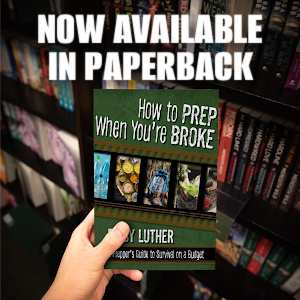

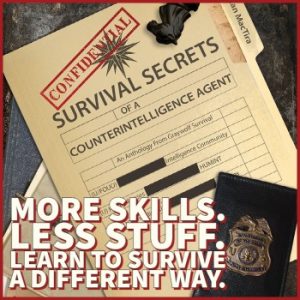
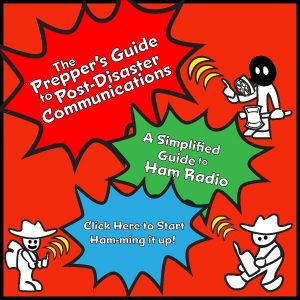



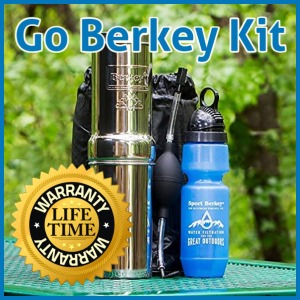
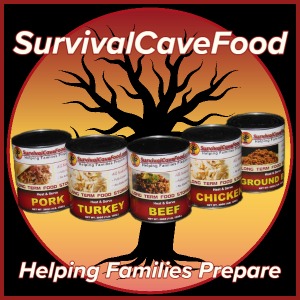


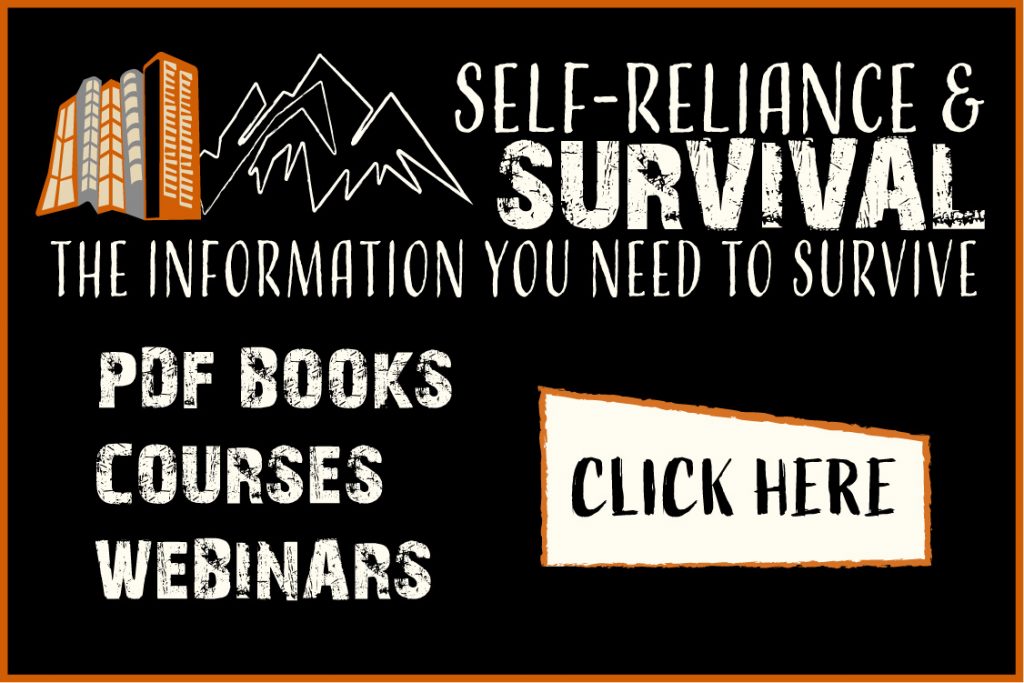

8 Responses
Planning ahead for your situation is key; I like the notes about why Rowan did what she did.
We are on day 5 with no power after the ice storm March 28-29, and today is the second day any kids are at school. Suggestions:
1- keep the salt until after the precipitation, then you can put it where needed and it will at least make for a bumpier surface that allows more traction
2- we have pets and livestock, so I made sure the big water trough was full – carrying buckets from it to the barn is closer than the well
3- if it’s going to be a few days, paper flatware / cutlery is a lot easier to deal with (i.e., put in wood stove!), especially with kids and no running water
4- plan meals that are easy to make AND clean up, with whatever your set up
5- sign up for local weather & power updates from your provider
6- know where you get cell phone coverage (a couple of spots in our house are good)
As she says, know your situation and plan for what you have and can do!
Really great advice, especially about the well hand-pump. We have one, and I didn’t even think to cover it from the ice! I will do that moving forward. Thank you!
Thank you for your article! Very timely.
I agree with you that writing an ‘After Action Report’, or ‘Lessons Learned’ is the only way to really learn from our experiences. Writing it down is critical too; so many studies have shown that writing long hand imprints knowledge in our mind much more effectively that just thinking about it.
I will add my two cents in the order of your article:
CHARGING: Tt is important to know how long it takes to charge each device and that includes whether you are using a low-watt USB-A source or a higher watt USB-C source. We need enough chargers to feed all of them at the same time before a storm. If you can’t charge all of them at once, decide which need to be charged first. In my mind, that is my phone and one, small, portable battery bank in case I need to evacuate. Battery banks will lose capacity if they are continually topped up but not used. Develop a habit of using your battery banks to charge your phone.
SALT: it is a good idea to salt a driveway before a storm because it will make shoveling easier. I salt liberally. Sand is great too, but I only use it in an emergency because my wife really, really dislikes me walking it into the house… Salt sells out fast so buy it early in the season. It keeps forever so I have several bags in the garage. I fell twice this winter – hard. Once shoveling the driveway and another time walking somewhere after a storm. I was not hurt, but I am 65 and…according to the WHO, “falls are the second leading cause of unintentional injury death worldwide, after road traffic injuries, and are responsible for an estimated 684,000 fatal falls annually. In the U.S., falls are the leading cause of injury-related death among adults aged 65 and older, with the fall death rate increasing by 41% from 55.3 per 100,000 older adults in 2012 to 78.0 per 100,000 older adults in 2021.”
HEAT. Our heat is natural gas and won’t work without power. I bought a 30,000 BTU standalone ‘vent-less heater’ as backup. It runs off a 20# propane tank and is designed to be used indoors without a vent/chimney. Some people may blanche at this, but I have used these off-and-on for 25 years. Do your research and follow instructions to the letter and you will be fine. Have an extra CO detector. These heaters will raise the humidity level in your house, so we crack 2 windows to prevent the humidity from rising too much. Our stove is natural gas and it can be lit with a match when the power is out. I keep (3) 20# propane tanks outside for use during the winter.
WATER: I have 50 gallons available year round and we rotate through it. I also have 100 bottles of water in the basement. Be prepared to put some antifreeze in your toilet and sinks if for some reason your house gets below freezing. Know how to shut off the water and drain your system beforehand. If you wake up in the middle of the night and your house is freezing cold and you have no heat, do what a friend in Texas did; he fill a big ‘spaghetti’ pot half way with water and left it on his outdoor BBQ to freeze and went back to bed in his sleeping bag. When he got up in the morning, he lit the BBQ and when the water melted, he put a few plastic water bottles in the pot to melt. Smart.
FALLING TREES: Give some thought to your risk of a tree falling on your car. We have a huge tree next to the driveway so I move the truck to the back alley if an ice storm or derechoes threaten.
NEIGHBORS & FAMILY: Absolutely check on them before and during a storm. We cannot stop anyone from being a knucklehead.
FOOD: Be ready to move your refrigerator outside or to the garage if power is down for long. Obviously, have food… I know everyone here knows that but it is shocking how many people shop every day and can’t go 24 hours.
Meh, two days ago I ordered a uh.. BLUETTI EB3A Portable Power Station because ? I wanted one.- it was about $80 off.
Most of my things are charged or operate with AA or AAA batteries and I have many of those plus rechargeables.
My main things would be heat and light, both long accounted for.
Thing is most of the toys are just not necessary.
The main issue of a huge storm is heat, not a problem with the extra wood and indoor burner
and light if I need to do anything.
I think at times people make problems where there are none.
It’s easy enough to have basics always ready, literally takes a few minutes a month to
upkeep it.
Like a “storm box” with candles/lighter, Good batteries, a radio or two, a couple flashlights.
Even a wool blanket or two.
Good ideas !
Salt – I use Calcium Chloride. Farm Supply Stores, Farm COOPs, and some hardware stores (Ace) carry it. Farmers use it to prevent livestock slips and falls.
It melts ice to 40 below F. Less harmful to pets & plants. It WILL cause rust. Wash the vehicle ASAP,
Wind shield and wipers – Use a tarp or trash bags to cover them make sure to cover the drive mechanism at he bottom of the wipers. I have used blue painters tape for this. My dad found out the hard way how expensive it was to remove the dashboard on a BMW. You can use the CC for this, Wash it down ASAP. CC will cause rust. Farm supply stores COOPs and some hardware stores (Ace) sell it. Farmers use it to keep animals from slipping.
Heat gun, hair dryer or hot water. Test a small area first so you can see the effects.
Okie mama here, Ice storms are bad here.
1. I make a big pulled pork or something big that goes a long way.
2. I freeze gallons of water to keep ice chests and freezers cold.
3. I have several of the contractor water jugs (ice chest material with spout) I put these in bathroom for handwashing water.
4. I clean and wash everything and put extra blankets at foot of every bed.
5. I have air mattresses if we need to sleep in living room (fireplace)
I prep firewood, water, food and we have the hand hot packs.
I live in east Texas.and as you probably know. We had a complete power outage February 2021.just like you.i wasn’t fully prepared. I have a power bank with solor panel. rechargeable flashlights/lanterns/ am fm noaa weather radio and 2 phone chargers. For heat during that outage. Natural gas a
Stove 3 inch collum 1 wick candles and 6 inch 3 wick candles .I set up candles in the bathroom and living room. And yes it stayed a lil cold inside the 5 days and 4 nights.but doable.ive gotten 2 Mr heaters and 4 20LB tanks and acceries since .
I need more
We had a major ice storm several years ago. We prepared by bringing wood close so that we could use the fireplace for heat without risking falls to get wool. We filled several kerosene lamps and trimmed wicks, putting strike-anywhere matches next to each one. We made sure that plenty of water was available. We located an alcohol burner and fuel to heat food. The ice kept us house bound for 4 days but we were relatively warm, could read, had hot food and beverages as needed.